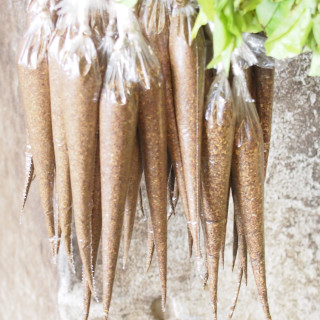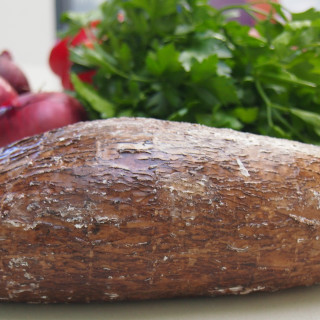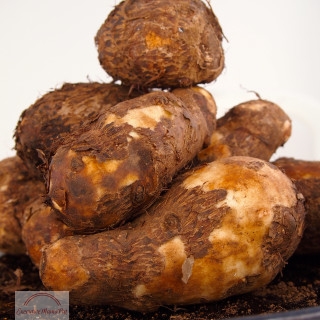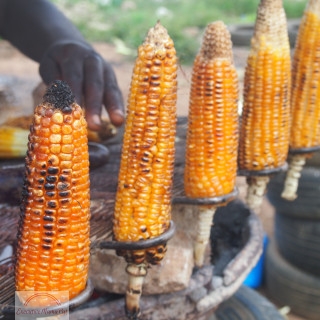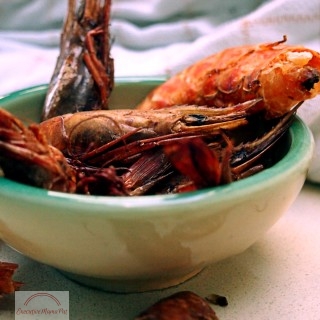Highly aromatic, and very hot, Cameroon Pepper (also known as “Yellow Pepper” or “Black Pepper”) is made from dried Scotch Bonnet Peppers, and should be used with caution. It adds a distinctive ‘Nigerian taste’ to dishes. The “Cameroon” part of its name refers to the drying process. It is generally bought ground, but is also…
Cassava
Known as ege (Yoruba), akpu (Igbo), rogo (Hausa), it is a cheap source of carbohydrates, but low in other nutrients and as such it tends to be eaten with protein and vitamin-rich foods. Many varieties (so-called ‘bitter cassava’) contain cyanide and must therefore be properly prepared before consumption. The most popular form of processing in Nigeria is fermentation which produces garri, a fine grain similar to polenta. Other varieties (‘sweet’) are prepared by peeling and boiling.
Cocoyam
Nigeria is the world’s leading producer of cocoyam. Cultivars of two species are generally grown for food: Colocasia esculenta (taro, ede) which can be fried, boiled, roasted, grated and steamed or pounded; and Xanthosoma sagittifolium (tannia, ede ofe) is used in thickening soups. Nutritionally superior to cassava and yam, the corms are rich in carbohydrates;…
Corn
Corn (Maize, Zea mays subsp. mays L). Widely grown in Nigeria, both commercially and domestically, there are principally two varieties: white maize and yellow maize. The former tends to processed into flour or a stiff paste and used in making porridges such as akamu (ogi) or ‘swallows’ such as tuwo masara, nni oka and eko….
Crayfish
Much like the shrimp paste used in Chinese cookery, crayfish (actually dried shrimp) is used as a flavouring (and a thickener) for many stews and soups. Chinese shrimp paste may be used as a substitute. Small crayfish is ground whole using a coffee mill or blender; or more traditionally using a mortar or grinding stone….
